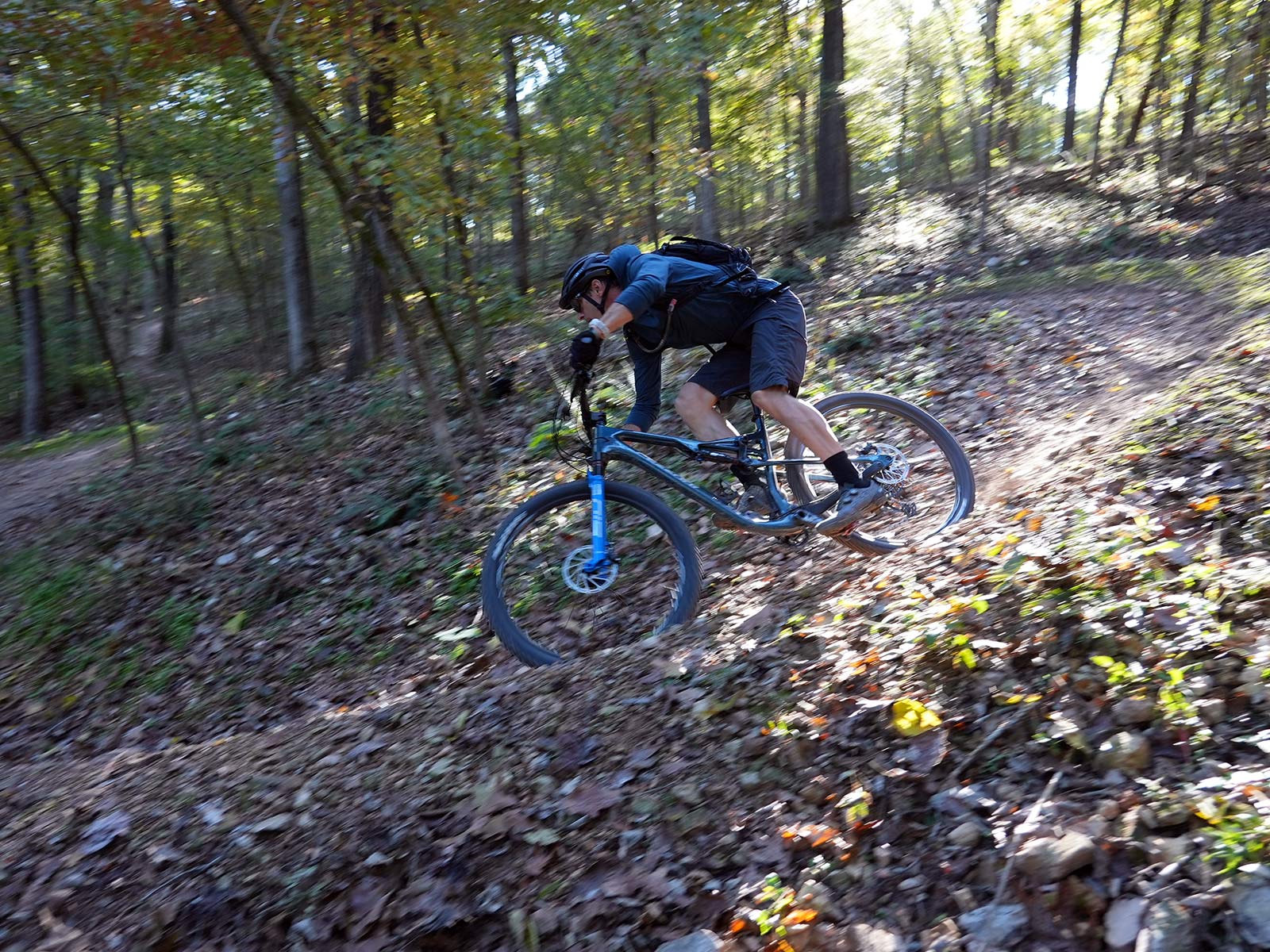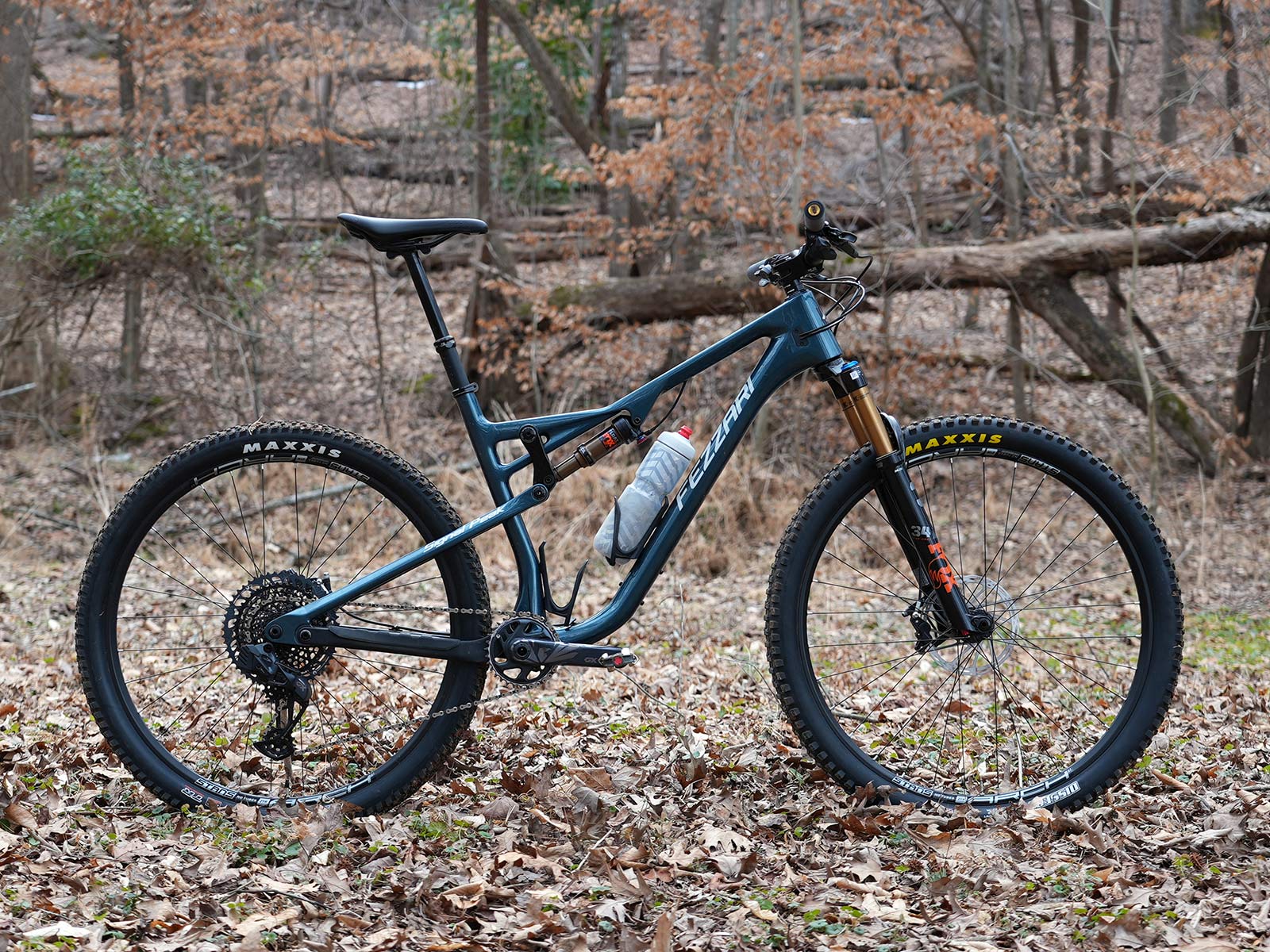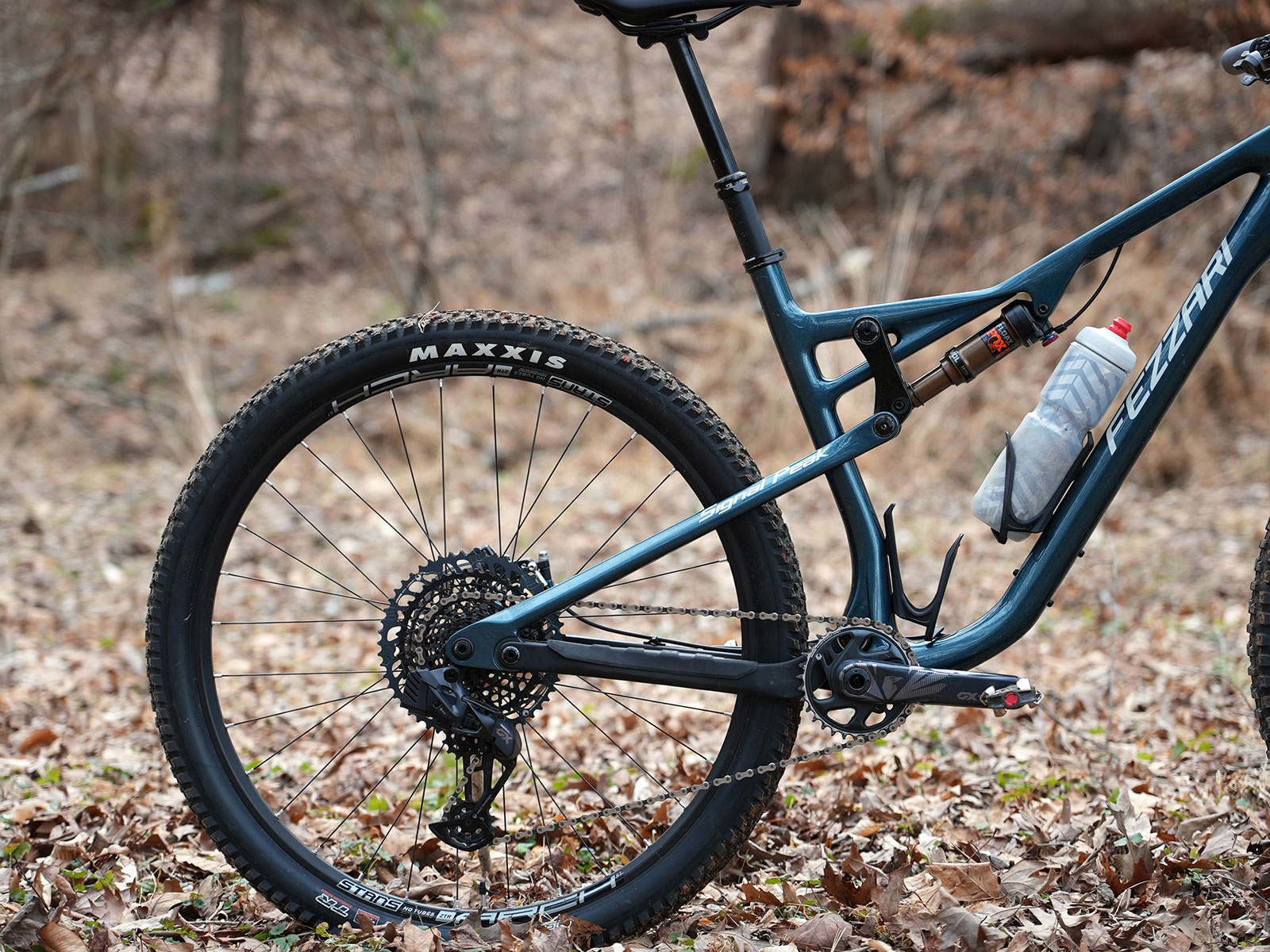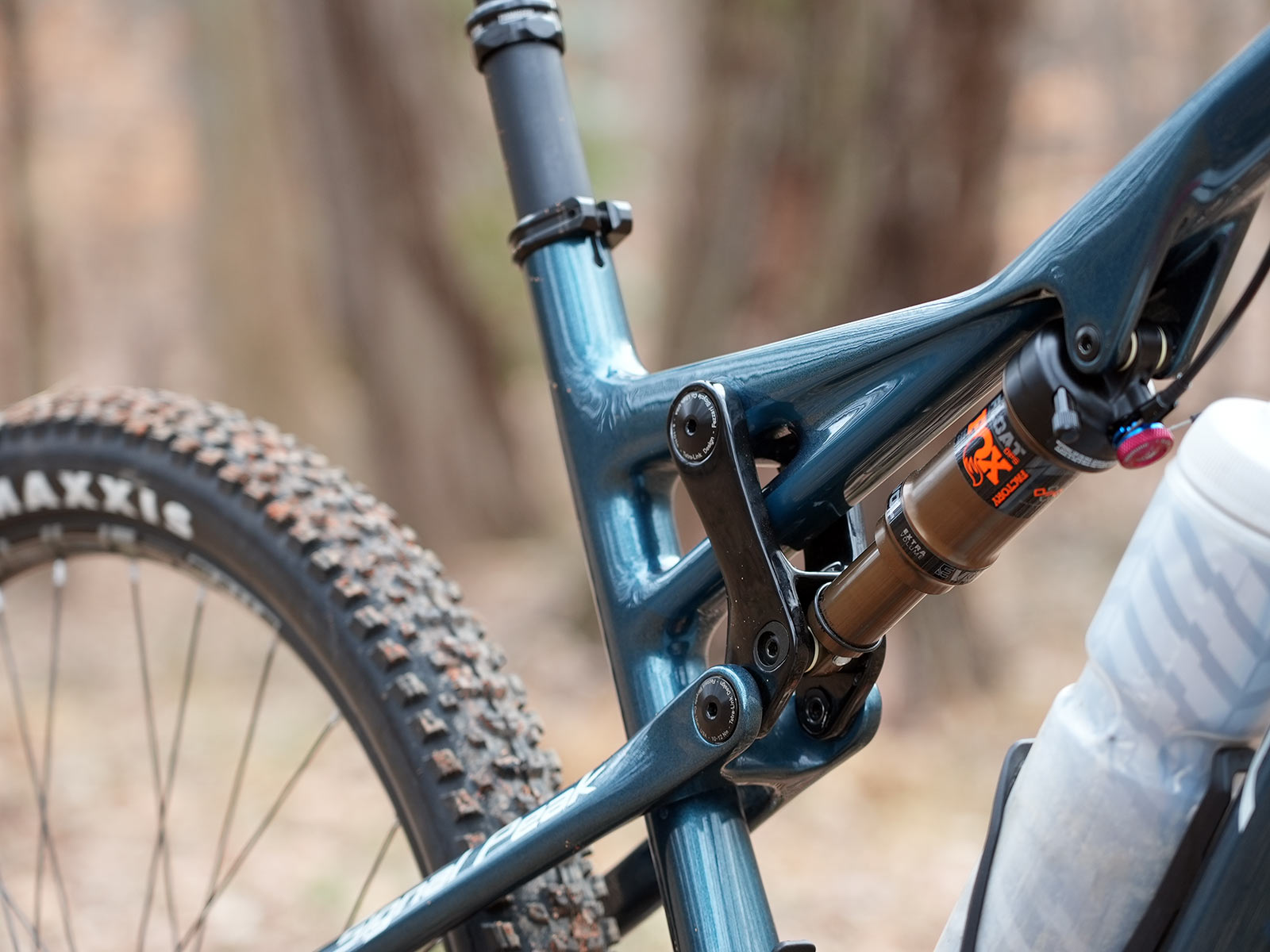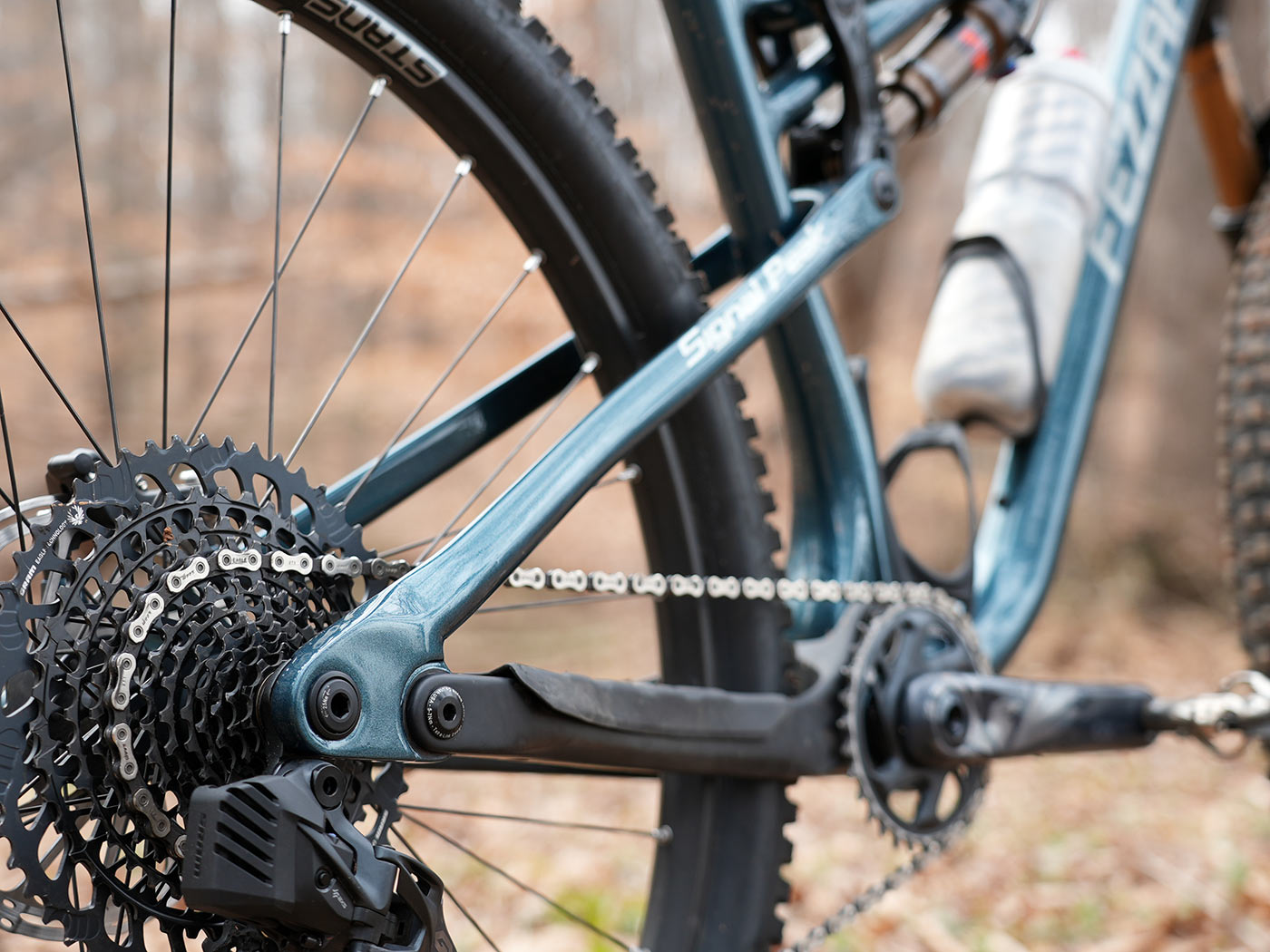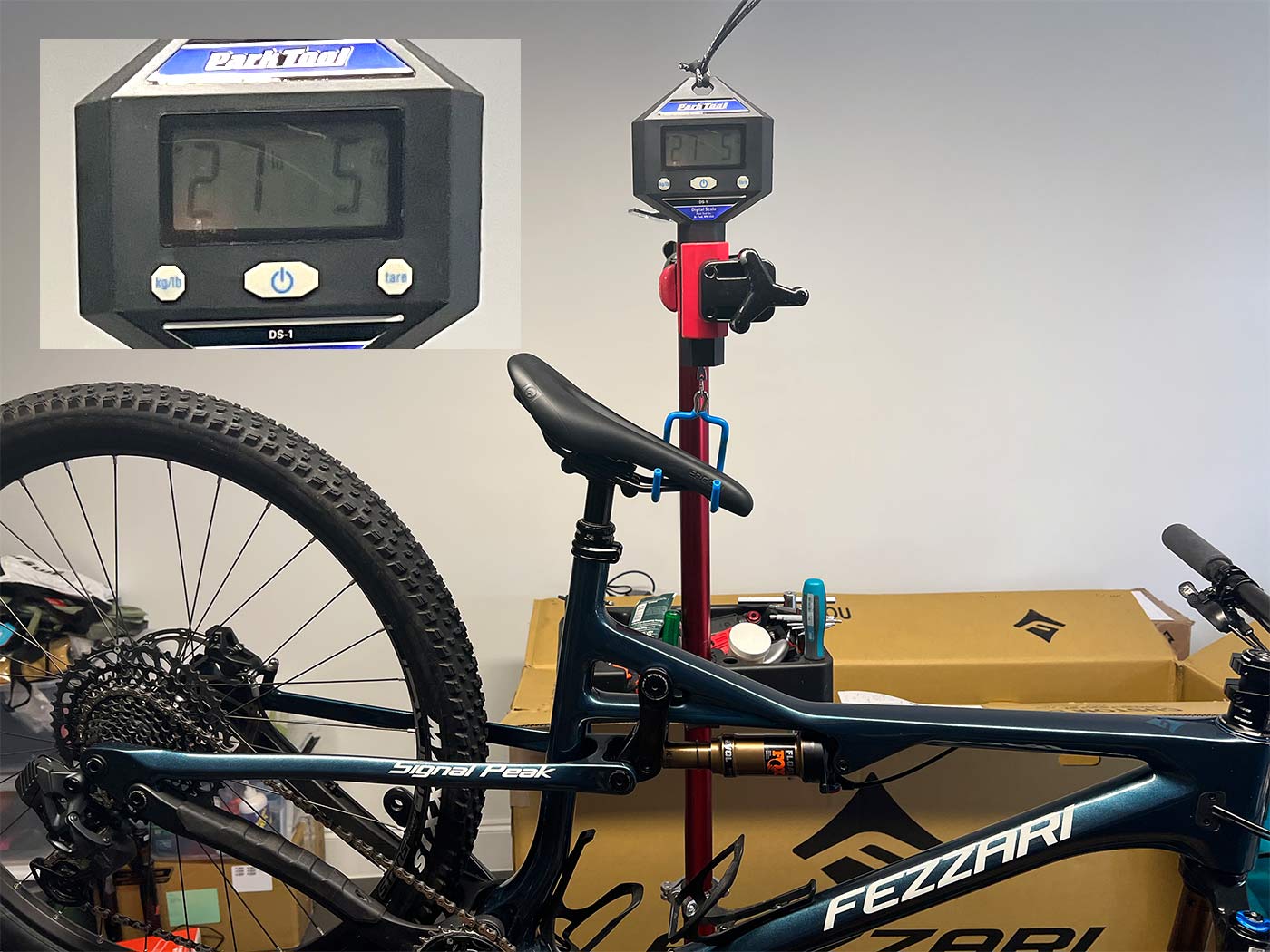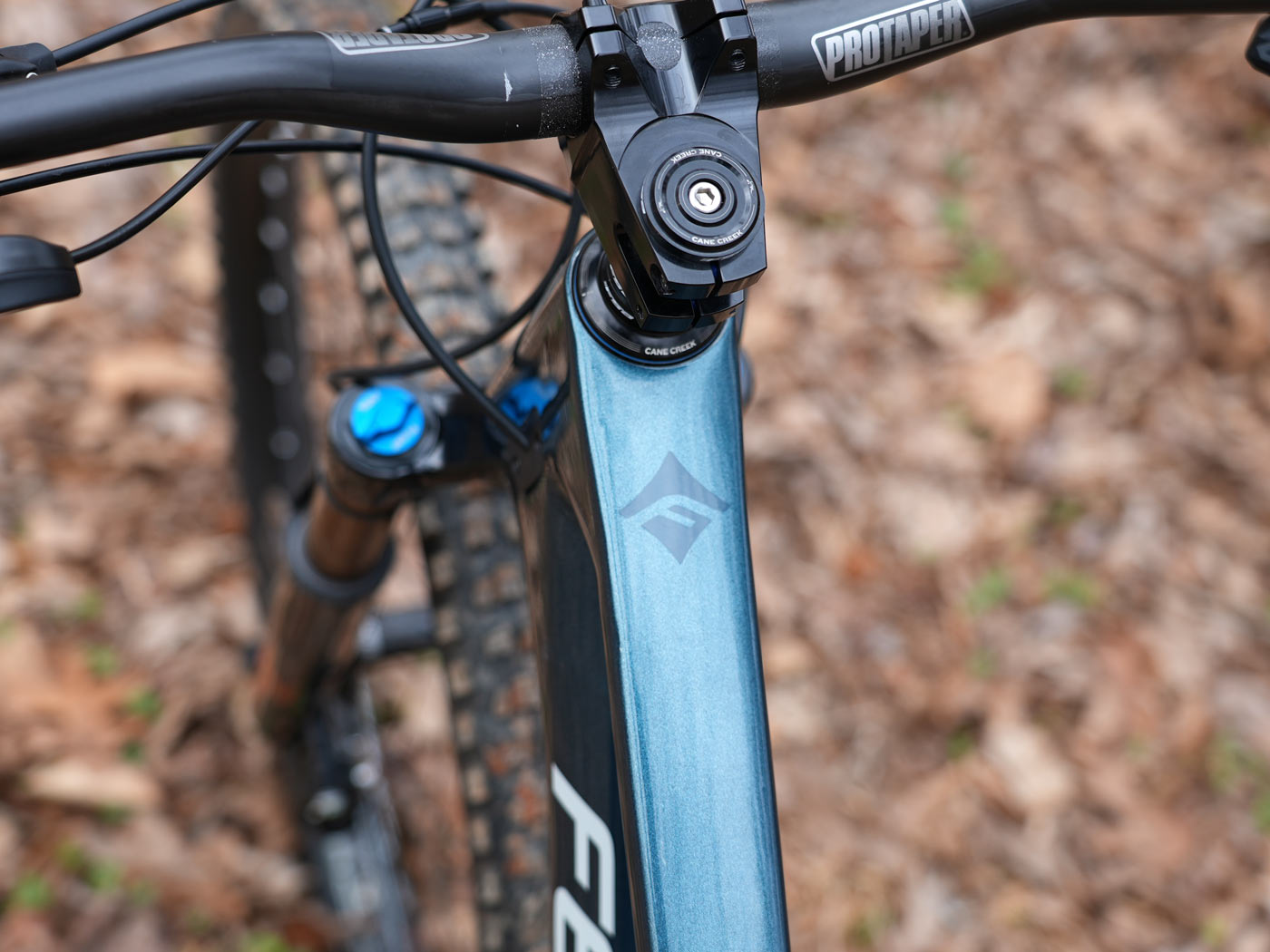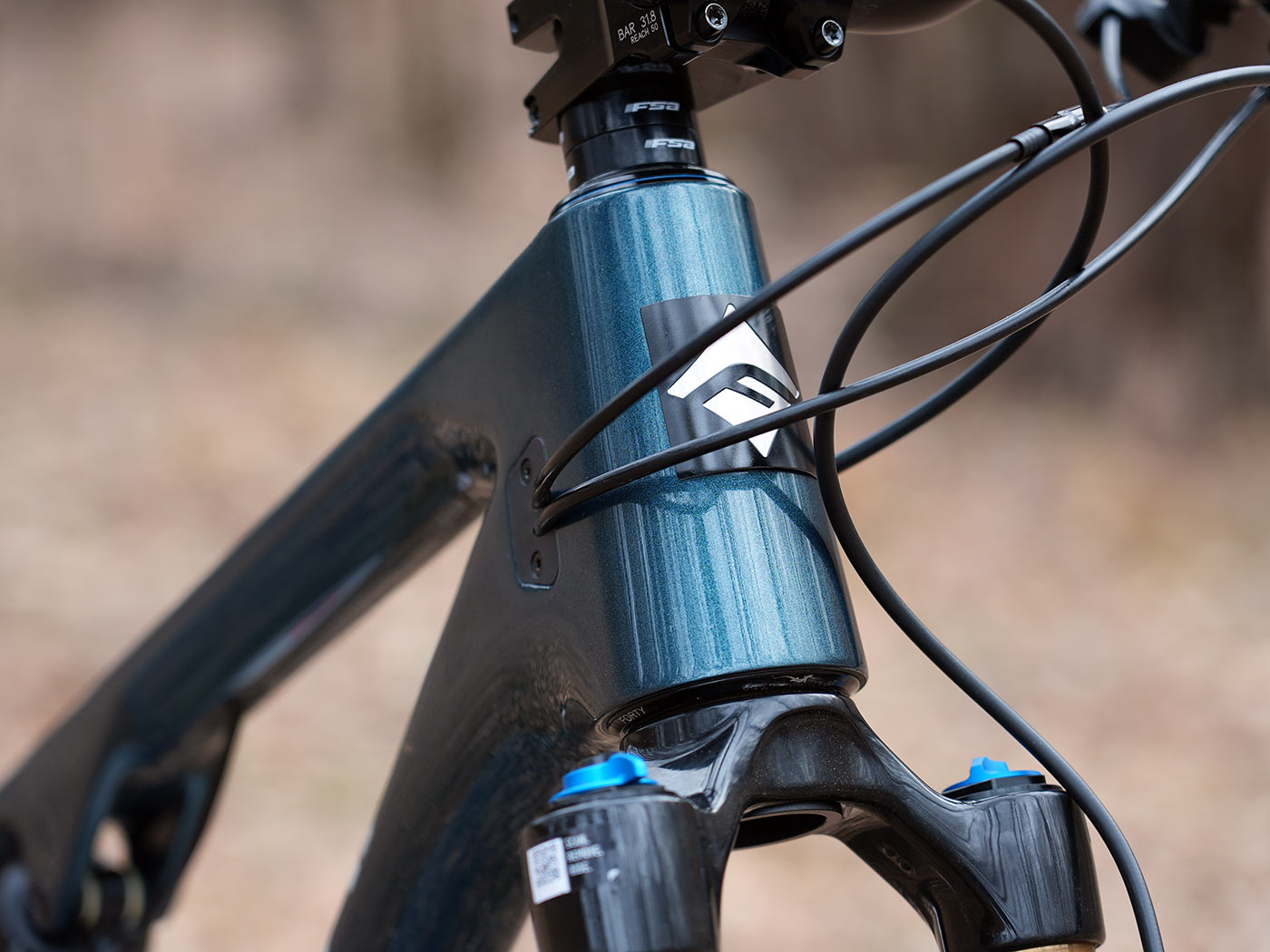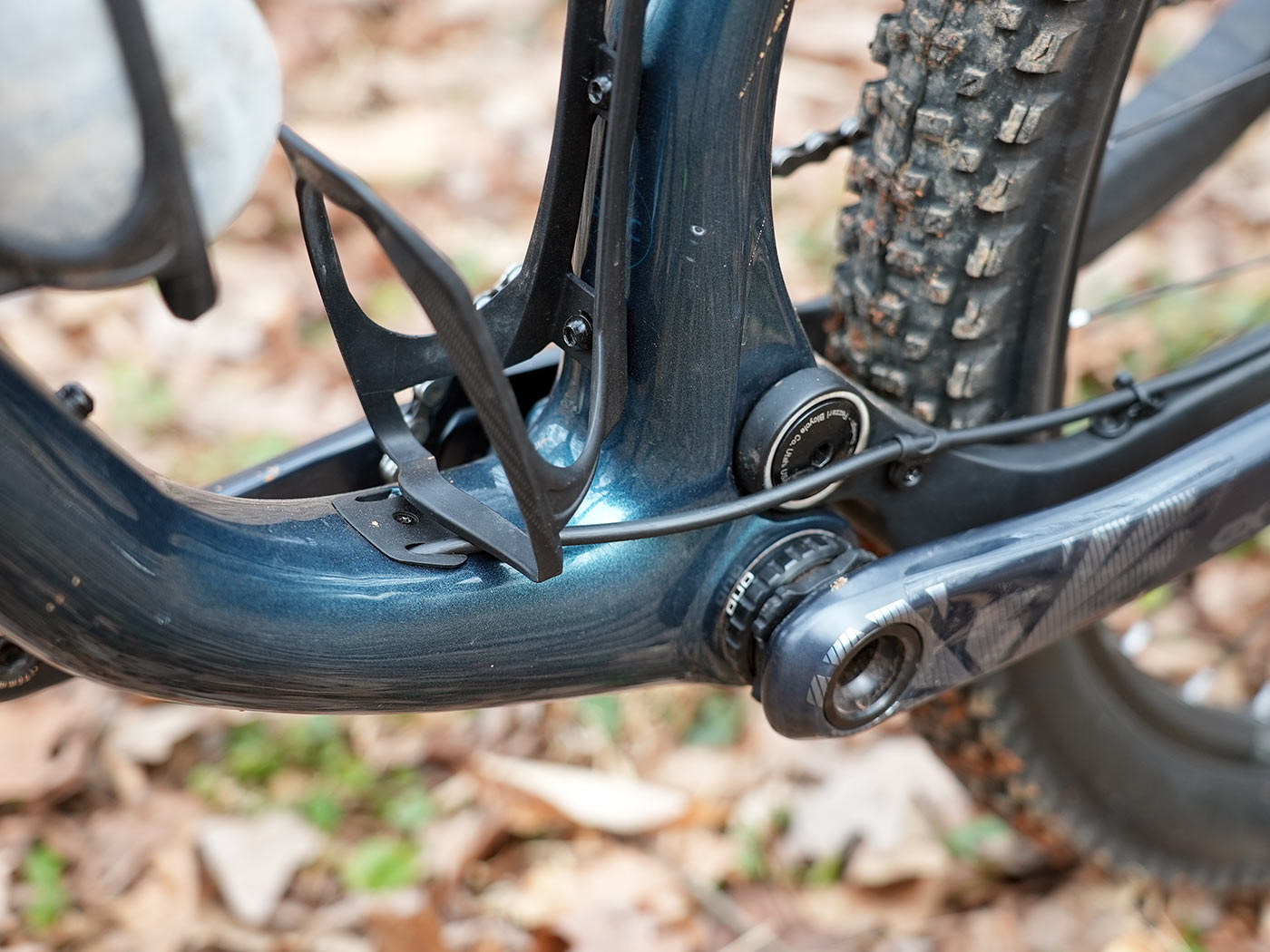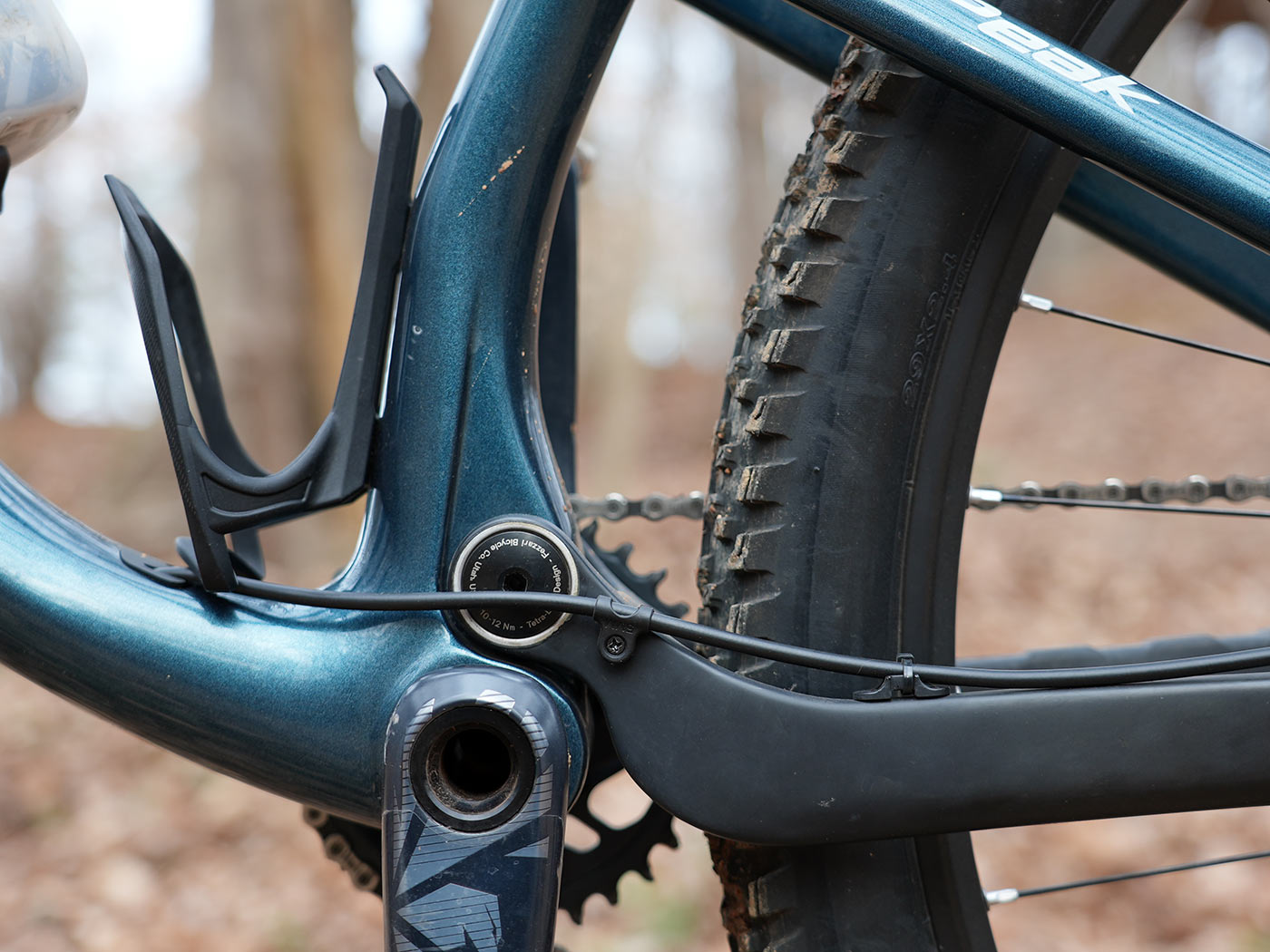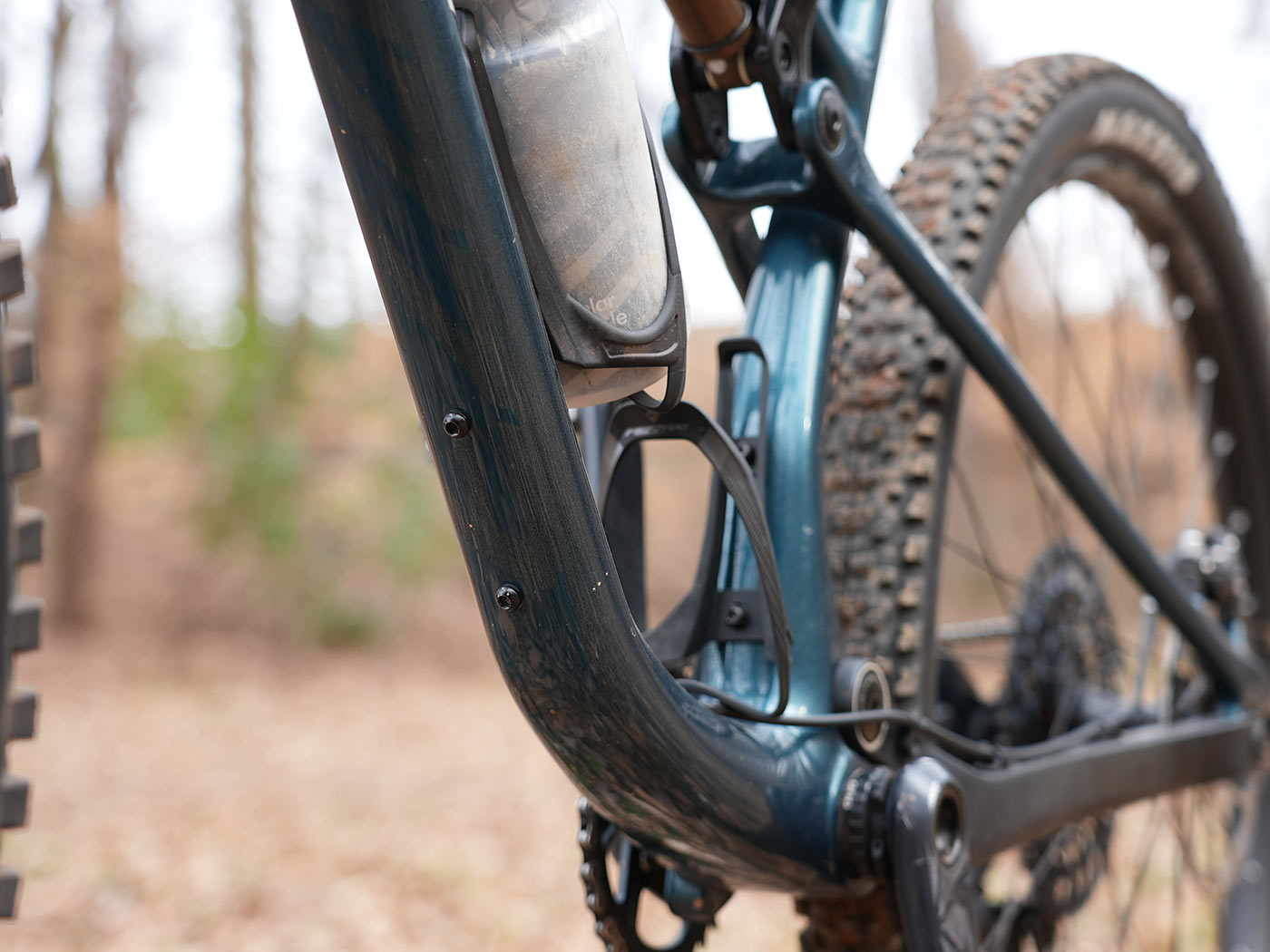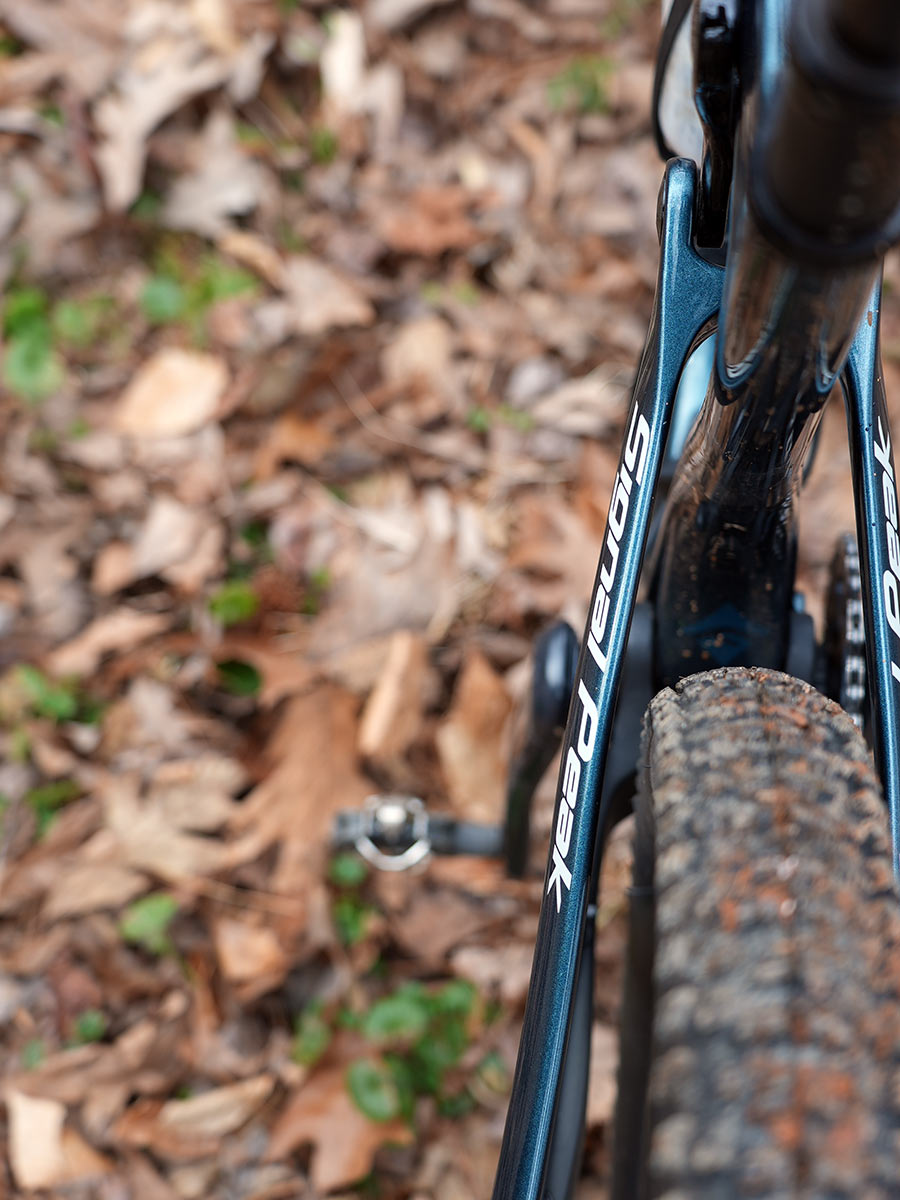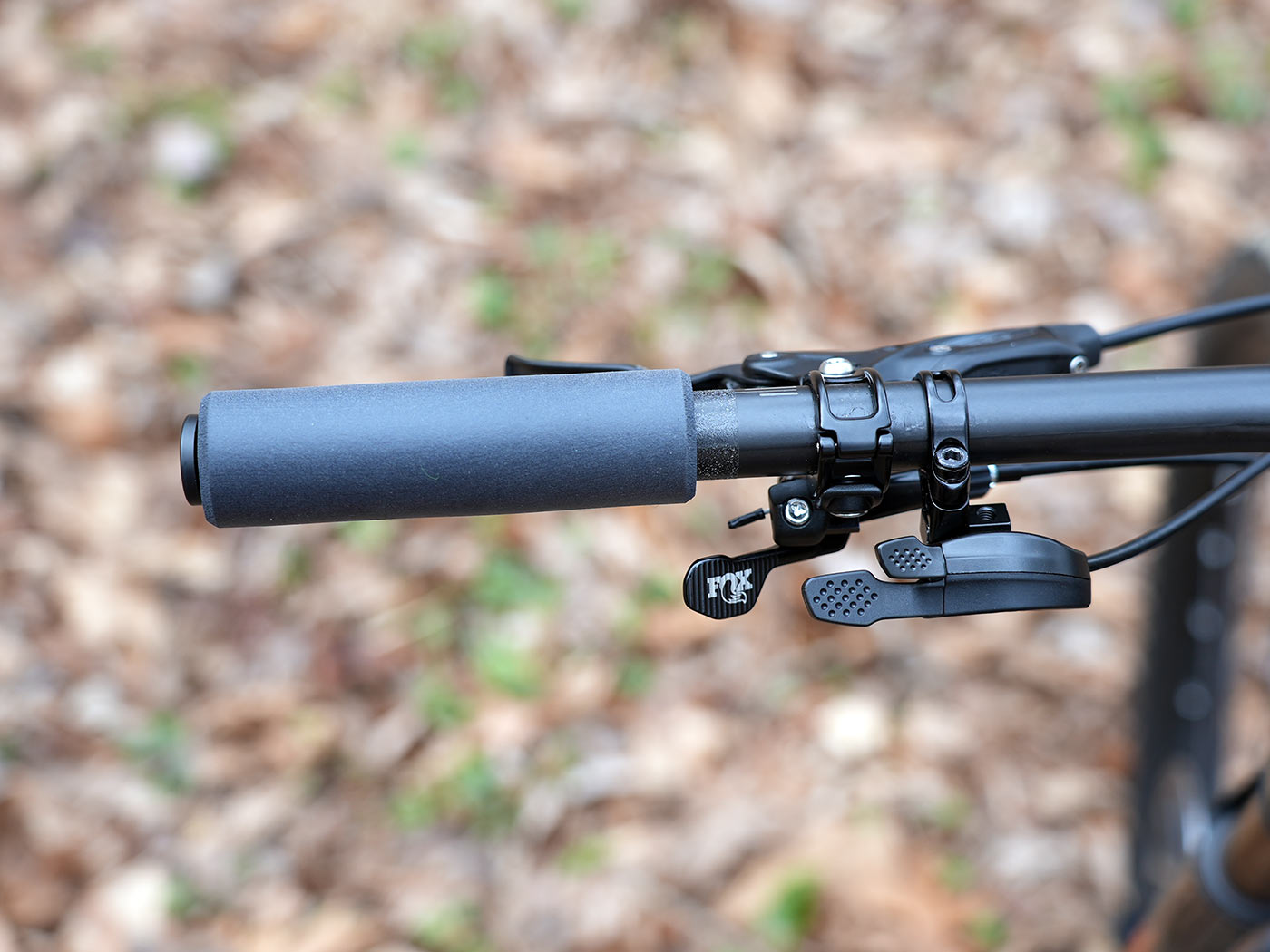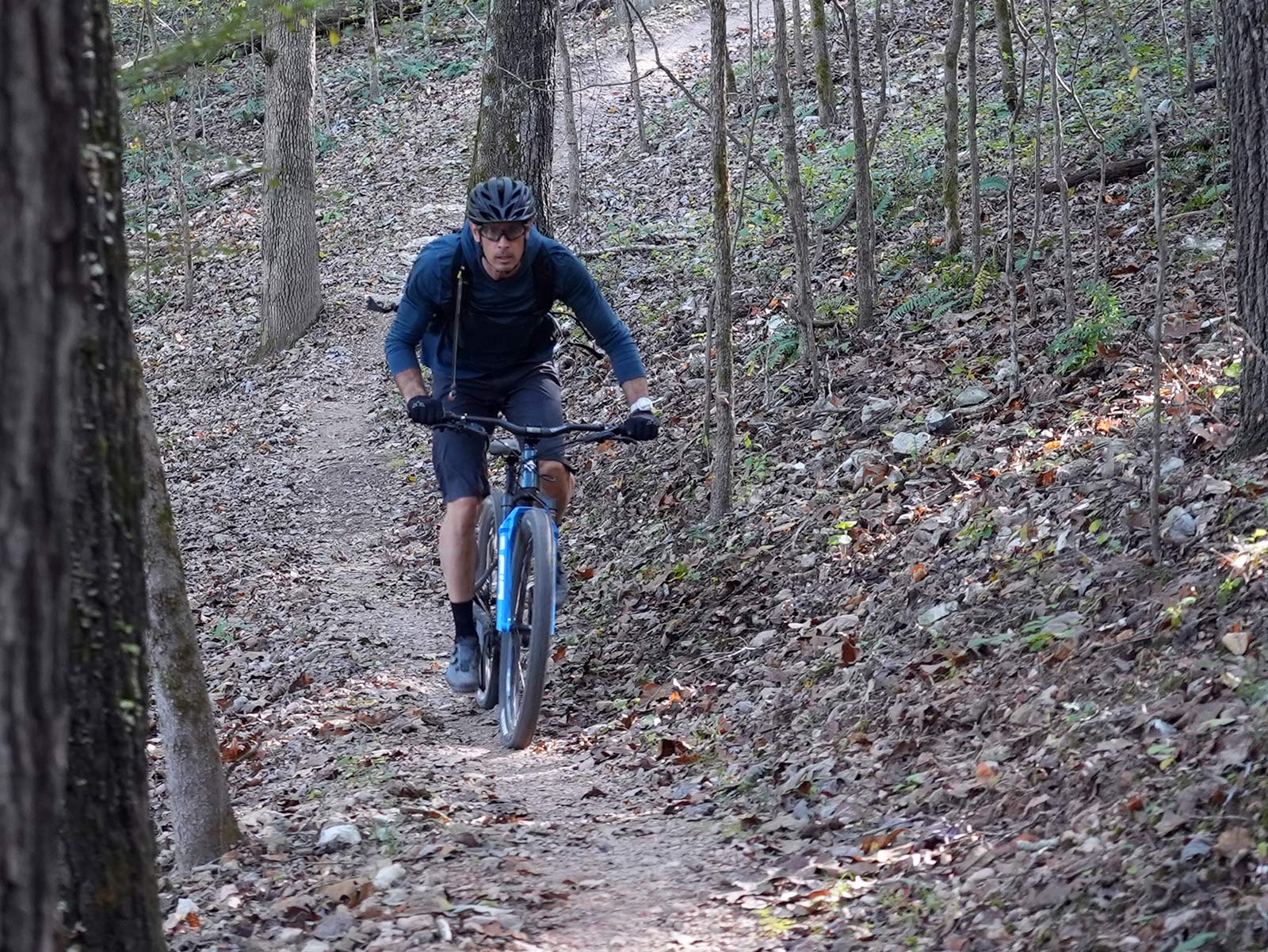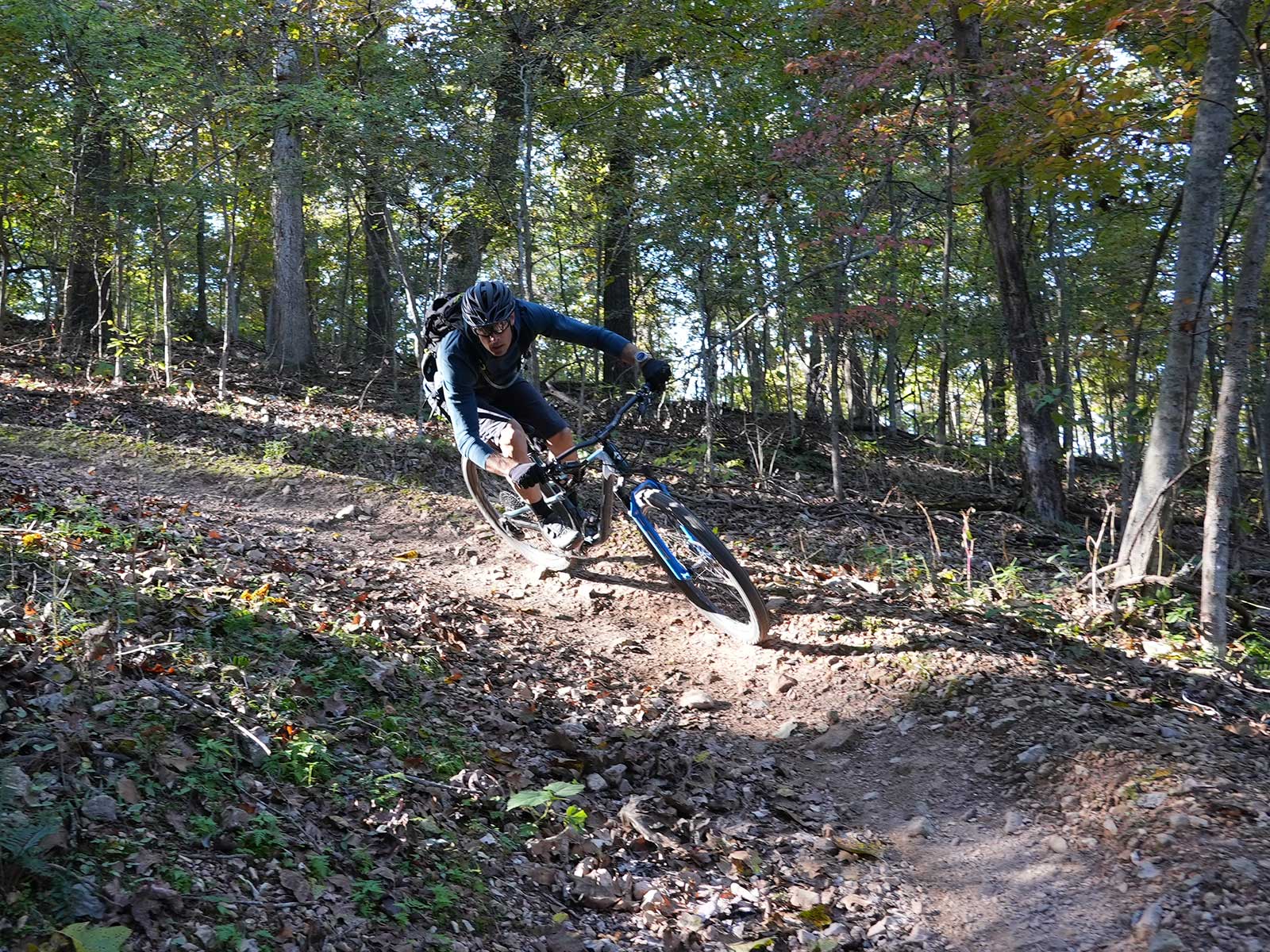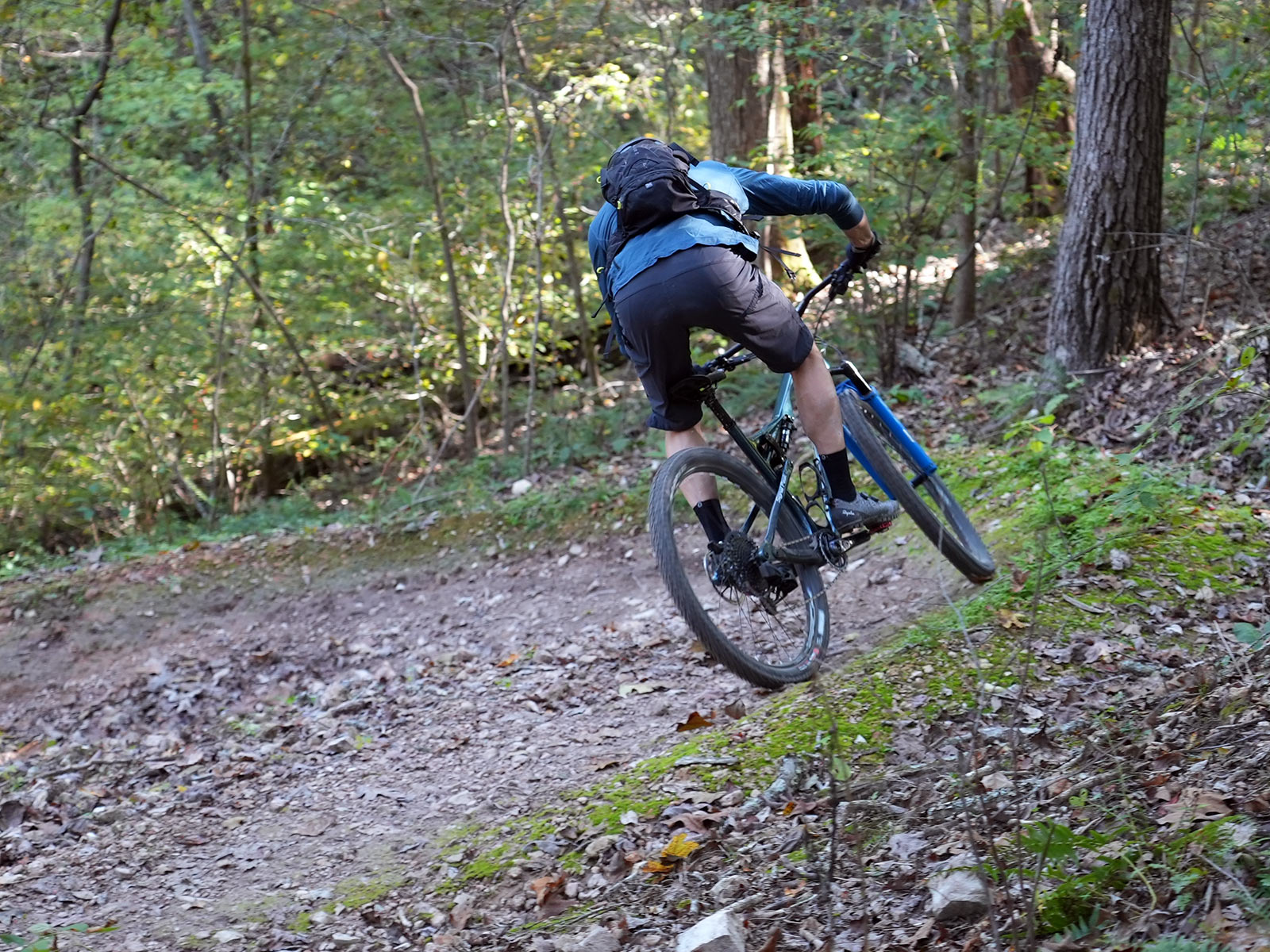If you’re looking for a fast, lightweight, efficient mountain bike that doesn’t skimp on technical trail performance, the new Fezzari Signal Peak is worth a look.
I got to rip one around Bentonville’s mountain bike trails, from the groomed and bermed connectors lacing through the city, to rougher, fresher backwoods trails lined with rocks and roots. Most recently, I’ve had it out on my local trails, too, and on everything it’s been quick on the ups and fun on the downs.
Here’s a closer look at the details that make Fezzari’s bikes so friendly, followed by my ride report…
Fezzari Signal Peak 2.0 tech details
Visually, the new Signal Peak is far sleeking and better looking than the original. It’s a lot lighter, too.
One thing Fezzari didn’t mention during the launch was the flip chip in the forward shock mount. Switch it around to change the head and seat angles by 0.5º, with the rearward position being slacker. Changing the travel simply means changing the fork and rear shock, with the rear simply getting a shorter stroke but the same eye-to-eye length.
The chainstay gets a rubberized cover that your heel may or may not rub. And your chainstay will be painted to match…this was an early but production-level frame.
It’s not just the leanness of the new frame, it’s also the tube shaping across all areas that gives it a much better aesthetic…and helps it drop weight.
My size XL test bike with SL frame, SRAM GX Eagle AXS group with XO Eagle cassette, Answer stem and carbon riser bar, Ergon saddle, Fox dropper post 34 SC fork and Float DPS shock with remote, Stan’s Arch S1 alloy wheels and Maxxis Dissector/Rekon 29×2.4 tires, ESI grips and SRAM G2 4-piston brakes came in at 27lb 5oz (12.29kg).
The top tube is flat on top, and narrow, but with a boxy head tube area that keeps the front end torsionally stiff. Fezzari’s CleanCatch cable ports trap the brake hoses, dropper lines, and any shift cables securely so they won’t rattle inside the frame. It works.
Another nice touch is the cable exit routing over the bottom bracket. Nothing dangling down to get damaged should you smack the BB shell (it can happen). Note that there are TWO bottle cages inside the front triangle, and they fit these on every frame size.
All but the smallest frames can fit another bottle cage underneath the downtube, though these are probably best used for bolt-on tube/tool mounts in most cases.
The frame will officially clear up to 2.5″ tires, just double check what your fork can take. Photo above shows a Maxxis Recon 29×2.4″ tire fitted to the Stan’s ARCH S1 wheels.
Besides me pretty much never using the lockouts or firm modes, this is another reason why I don’t care for remote lockouts…there rarely a good place for them anymore. My test bike has a Fox dropper post, which is the remote closest to the grip. The Fox lockout remote sits inboard. It’s actually not a bad setup, works just fine and doesn’t stick out, but it’s not really being used.
Should you opt for a Rockshox-equipped XC build, you’ll get their Twistloc remote, which I’m not a fan of simply because I don’t like the accompanying grips. It works fine, but for me, is pointless and eliminates choice of grips.
FWIW, these remotes only get spec’d on the XC builds, and for most riders, I’d suggest getting a Trail build…just as fast, more fun, and minimal weight gain. And you don’t get a remote lockout, which is a bonus. Plus, the XC builds get a rigid seatpost, Trail builds get droppers FTW.
Fezzari Signal Peak 2.0 review
Any bike claiming to be “XC” needs to be light and fast, and the new Signal Peak accomplishes both. While both of the builds I’ve ridden had remote lock outs, I don’t think this bike needs them. XC “racers” can disagree, but for normal mountain biking, you’ll lose more time reaching down to fiddle with the switch than you would just hammering in Open mode.
Fezzari’s TetraLink suspension design is tuned effectively, allowing for great bump absorption and traction while remaining efficient when hammering. Whether it’s an out-of-the-saddle sprint, or a grinding up a seated climb, there’s not really a need to fiddle with knobs and switches…it just goes.
It goes fast through rock gardens and techy, chunky terrain, too. The nice thing about this is that I could hammer through sections like this (photo above) without having to decide between letting the suspension soak up the bumps or pedaling hard to get through it…it can do both at the same time.
This is key for climbing over rooted sections, especially remaining seated and just letting the suspension do the double duty it’s tasked with – absorb impacts, and maintain traction. Fezzari has dialed this in with the past couple full suspension launches, and the Signal Peak 2.0 proves it works just as well on short travel applications, too.
The lower frame and standover height, combined with a stiffer frame, made it easy to whip around, lean hard, and wiggle through the tree-strewn natural trails farther outside of town.
Our own local Greensboro, NC, singletrack is mostly tight and twisty, with turns that force you to be out of the saddle, dancing with the bike to snake around series of trees. A light, low-slung frame makes this easy.
Fezzari’s steep seat angles with slacker front ends magically work nearly perfectly no matter which way it’s pointed. Climbing? Powerful. Descending? Confident. And it’ll hold a line well through the corners and straights.
I’ve only ridden the Trail version with 115mm rear travel and a 120mm fork. Most of my time so far is on the Rockshox SID and SID Luxe equipped bike, and now I’m on a Fox 34 Step Cast/Float DPS bike. Both were assembled preproduction with whatever parts they add, but both have some variation of SRAM Eagle AXS. Both are good, but none were built as you’d be able to buy them.
Regardless of the spec, the new Signal Peak is light, snappy, fast, and perhaps most important, just plain fun! Absolutely a bike that should be on your short list if you’re in the “down country” light trail or XC market.
